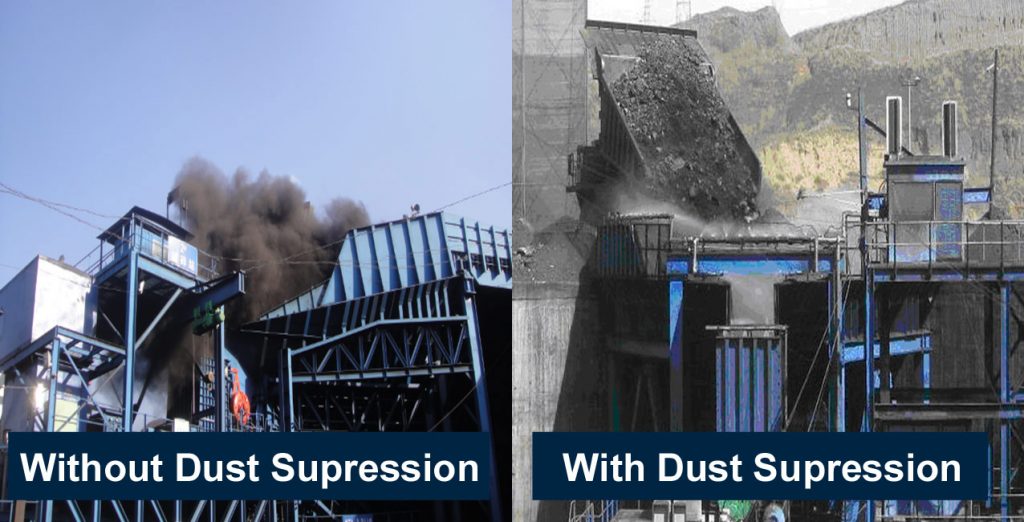Dust Control Methods
For decades, chemicals have been used as fugitive dust control measures applying a range of processes and materials. The chemicals wet the dust-prone material to induce the adherence and agglomeration of the dust to the bulk of the material. This significantly reduces the dust that can become airborne emissions.
Chemical dust control methods fall into four broad categories:
- Water Sprays with Surfactant – This method uses surface-active materials and surfactants to lower water’s surface tension. The droplets can then spread further and penetrate deeper into the dust-prone material.
- Foam – Created by mixing water and a special blend of surfactants, foam increases the surface area per unit volume, which improves wetting efficiency while using less water. Uniquely, foam can blanket a mass of coal to form a physical barrier against the dispersion of dust.
- Water Sprays with Binders, Humectants, and Surfactants – This method uses a binder to create a longer residual-suppression effect. The humectant is a water-loving material that forms strong hydrogen bonds with water, making the material difficult to remove from the system. The surfactant enhances wetting.
- Emulsions – Emulsions of water and surfactants normally suspend immiscible binders to create a residual-effect suppressant. Oil- and polymeric-based emulsions are examples of suppression agents used as railcar toppers, pile sealers, and haul-road suppressants.
Suppression Chemicals for Dust Control Management
As specialists in surface science, Benetech offers bulk material handlers a wide range of optimized dust suppression products for all of the dust control methods above. Nonflammable, nontoxic, nonexplosive, and biodegradable, these products strengthen dust control management by suppressing dust from various materials for different processes.
Dust suppression is a complex phenomenon that requires the use of surfactants. Many materials are hydrophobic (water-hating) and prone to repel water from the surface. To make the surface less hydrophobic, Benetech adds a surfactant to the water. The surfactant lowers the water’s surface tension to a value closer to that of the material being treated, allowing the water to be adsorbed on the surface.
The surfactant further forms a microscopic liquid film to increase the adhesion of dust particles to the material’s surface, which further prevents their regeneration. Surfactants also greatly reduce the water needed for suppressing dust.
By evaluating contact angles and spreading coefficients of surfactant molecules, Benetech has identified the structure/property relationships of different surfactants and their interactions with water, contributing to optimal wetting and adhesion for material handling dust control. All Benetech formulations contain synergistic combinations of wetting agents needed for fast and efficient dust suppression for materials under both hard and brackish water conditions.

Take Command of Fugitive Dust with Robust Dust Control Methods
The right chemical dust control method makes your operation cleaner, safer, more productive, and more profitable. Contact us at (630) 844-1300 today to speak with a Benetech specialist about material-specific dust control management for your operation.
Posted in Dust Control
